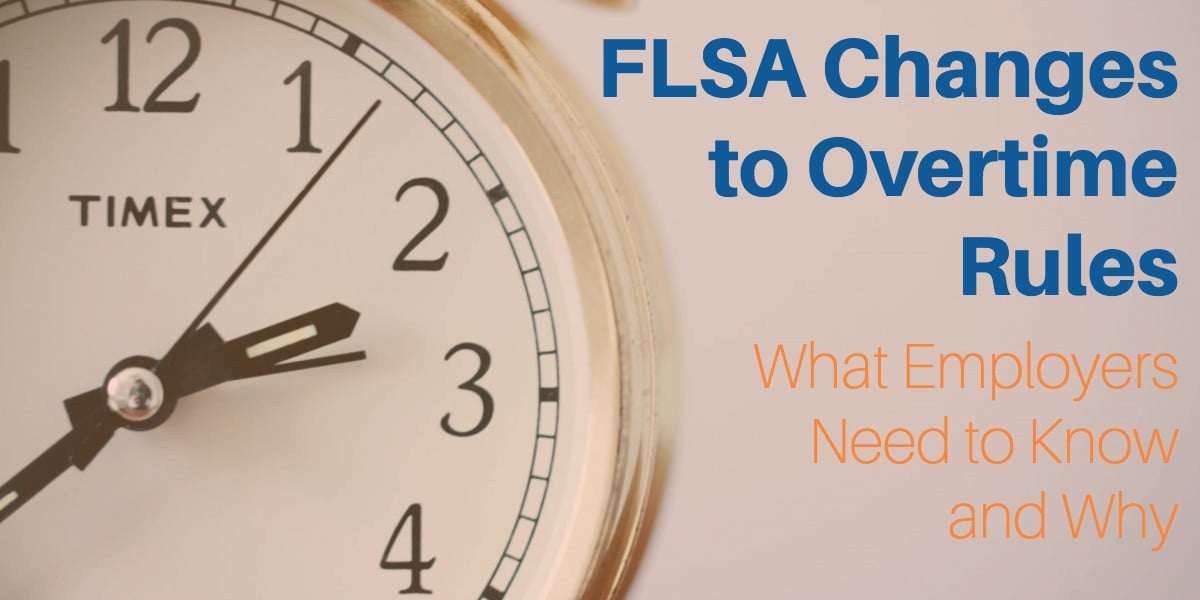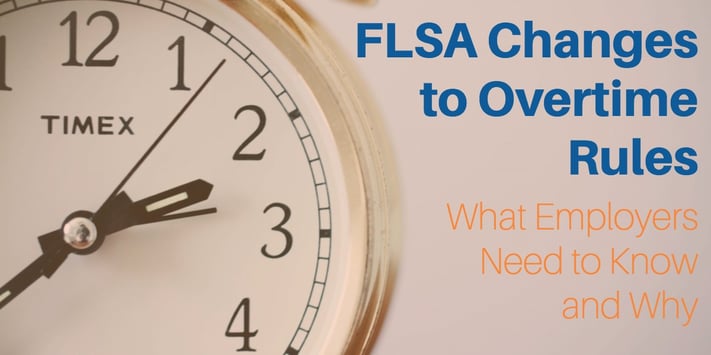Update: As of July 1, 2024 changes have been implemented to the Fair Labor Standards Act. For most up to date information, visit the Department of Labor website or schedule a consultation with Fuse.
Department of Labor Publishes FLSA Changes
On May 18, 2016, President Obama announced the Department of Labor’s official publication of FLSA changes to overtime regulations. It’s been a long time coming, and employers are asking—now what? What are the new FLSA overtime rules? What do the FLSA changes mean for my organization?
The Fair Labor Standards Act was first enacted in 1938. It set what we’ve come to know as the 40-hour workweek and the first minimum wage and overtime pay standards.
In 1975, the threshold for overtime pay was set to $250 per week. It took nearly 30 years for the next threshold increase. There has not been an update since—and many argued the FLSA overtime rules don't keep up with changes in inflation and other economic factors. In 2014, President Obama decided it was time for things to change.
Those changes have arrived. Beginning December 1, 2016, the FLSA changes will go into effect and will automatically update every three years beginning January 1, 2020.
Let’s review the Final Rule from the DOL and dissect these changes for what they mean for your business.
Key Provisions of the Final Rule for FLSA changes to overtime regulations according to the Department of Labor:
“The Final Rule focuses primarily on updating the salary and compensation levels needed for Executive, Administrative and Professional workers to be exempt.
Specifically, the Final Rule:
- Sets the standard salary level at the 40th percentile of earnings of full-time salaried workers in the lowest-wage Census Region, currently the South ($913 per week; $47,476 annually for a full-year worker);
- Sets the total annual compensation requirement for highly compensated employees (HCE) subject to a minimal duties test to the annual equivalent of the 90th percentile of full-time salaried workers nationally ($134,004); and
- Establishes a mechanism for automatically updating the salary and compensation levels every three years to maintain the levels at the above percentiles and to ensure that they continue to provide useful and effective tests for exemption.
Additionally, the Final Rule amends the salary basis test to allow employers to use nondiscretionary bonuses and incentive payments (including commissions) to satisfy up to 10 percent of the new standard salary level.
The effective date of the final rule is December 1, 2016. The initial increases to the standard salary level (from $455 to $913 per week) and HCE total annual compensation requirement (from $100,000 to $134,004 per year) will be effective on that date. Future automatic updates to those thresholds will occur every three years, beginning on January 1, 2020.”
Access the latest updates on salary threshold changes and compliance requirements.
Now, what does all of that actually mean for your employees and your business?
Breakdown of DOL’s FLSA Changes for White-Collar Exemptions
What: DOL announces Final Rule for overtime and FLSA coverage.
Increased Salary Level Threshold
The biggest change in the Final Rule increases the salary threshold for FLSA non-exempt status from $23,600 per year ($455 per week) to $47,476 per year ($913 per week).
The DOL decided upon this salary level standard by taking a look at the 40th percentile of weekly earnings of full-time, salaried workers. They look specifically to the lowest-wage Census Region, the South.
HCE Total Annual Compensation Requirement
The FLSA changes raise the HCE threshold from $100,000 to $134,00 annually (the 90th percentile of full-time salaried workers in the U.S.). Employees earning this amount or more annually qualify as Highly-Compensated Exempt (HCE).
Automatic Updates
Beginning January 1, 2020, the FLSA salary standard for non-exempt status will automatically update every three years to maintain relevancy. The DOL believes this will provide more predictability to employers for salary standards and graduated salary changes.
Nondiscretionary Bonuses and Payments
New to FLSA regulations, employers will now be able to use nondiscretionary bonuses and incentive payments like commissions to satisfy up to 10 percent of the standard salary level. These bonuses and commissions must be paid on a quarterly (or more frequent) basis.
Exempt Duties
Among the many FLSA changes, the duties test will not be one of them. According to the DOL, “The Final Rule is not changing any of the existing job duty requirements to qualify for exemption.” So, as it stands, workers whose jobs include certain executive, administrative, or professional duties and pass other exempt tests are exempt from FLSA overtime pay and other regulations.
Who: The FLSA changes will impact more than 4 million workers in U.S. Either these workers will have non-exempt status or employers will raise salaries to the new threshold. Among these 4.2 million workers, 56% are women and 1.5 million of these workers have children under the age of 18.
When: New threshold goes into effect December 1, 2016; automatic updates begin January 1, 2020 and occur every three years.
Why the FLSA Changes Matter for Your Business
Now more than ever, employers need to focus on compliance—with FLSA standards, ACA regulations, and more requiring hours and eligibility tracking.
With an increased salary threshold (updating every three years), more employees will be non-exempt for FLSA coverage including overtime pay. To ensure compliance, employers should implement the proper time and attendance solution to monitor and reach compliance.
From interns to CEOs, entry-level workers to managers, employers need visibility into how many hours employees are working each week. Is your business prepared? Get the FLSA Guide to prepare your business for the upcoming overtime changes.


